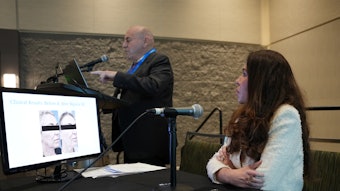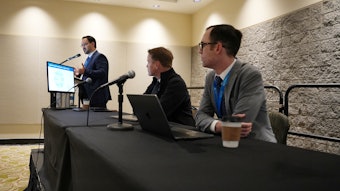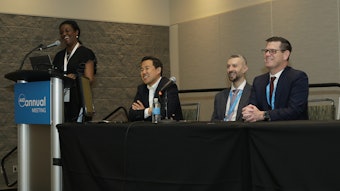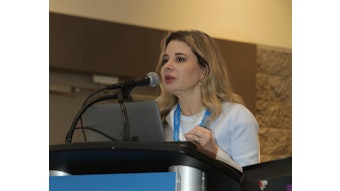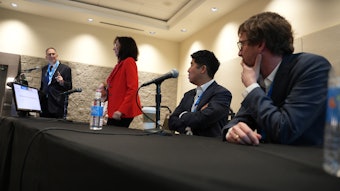If you give them data, they will come
Livingood lecturer, Marta J. Van Beek, MD, MPH, FAAD, shared the possibility of and power in telling dermatology’s story.

The AAD established the Clarence S. Livingood, MD, Memorial Award and Lectureship in 1993 in honor of Dr. Livingood and his amazing accomplishments. Dr. Livingood was in the U.S. Army and co-authored the Military Manual of Dermatology. He also served as president of multiple organizations, including the AAD.
Following in the tradition of the distinguished lectureship, Marta J. Van Beek, MD, MPH, FAAD, was this year’s recipient. She delivered her presentation, “Numbers and the Narrative: Leadership and Advocacy With Stories and Data,” in Sunday morning’s Plenary session.
Dr. Van Beek, executive medical director at the University of Iowa Ambulatory Clinics, is a natural storyteller, who just so happens to tell it like it is. As a physician and researcher, she is an advocate of data — the right data.
“We all know how important data is,” she began. “We all want data, we’re hungry for data, but data can say a lot of things. The real story is in the analytics, and analysis can be simple or flawed. Data with the wrong analysis can be harmful, and with this data, we can tell patients the wrong thing, which puts them and their diseases at risk.”
Analyze the analysis
To demonstrate this proclamation, Dr. Van Beek shared a truly close-to-home example: her three adopted African American children (two girls and one boy) and their hair. With all her expert knowledge about hair, as well as available “expert” analysis that certain products and hairstyles can cause hair conditions like traction alopecia and pomade acne, she said she knew what to do and what not to do to prevent this.
Unfortunately, she quickly discovered that her initial strategy for her kids to strut around with adorable, but “inappropriate afros,” was based on incorrect analysis. Dr. Van Beek learned how to give her daughters and son their desired looks (and accompanying confidence) without the painful outcomes.
Dermatology practice is the same, she said. For years, other people were using skewed, biased, incomplete, or erroneous analysis to tell our story. This included data from claims, prescriptions, and Medicare’s MIPS (Merit-based Incentive Payment System) program. These fictional stories were that dermatologists were expensive, incapable, and replaceable.
Simultaneously, Dr. Van Beek observed that each time she attended a dermatology meeting or retreat, the resounding consensus was “we need data.”
The answer is DataDerm™
The “magic” of DataDerm, which Dr. Van Beek helped develop and launch in 2014, is that it collects raw data that already exists. Even now, when a new dermatologist enrolls for DataDerm, the registry can retrospectively pull data back to 2015.
The invaluable resource is built with natural language processing to analyze and transform unstructured data to structured data. AAD partners with OM1 to manage and organize information and PA Consulting to provide the platform that allows dermatologists to view their performance in real time.
DataDerm also has research-ready data on conditions such as psoriasis, hidradenitis suppurativa (HS), and alopecia, which members can request at any time.
“We are here to improve patient outcomes and reduce administrative burdens with DataDerm,” Dr. Van Beek said.
This includes using machine learning and augmented (not artificial) intelligence to supplement reasoning and streamline workloads.
“We believe nothing should be done without the guidance of a physician,” she said. “These tools can augment our work but not replace our work.”
How rare is rare?
A second part to the story that Dr. Van Beek said revealed itself with the help of DataDerm and its secondary generation component Patient Finder was that what dermatologists once considered to be rare diseases, may not be.
“Now that we have the data, we can use the data — the right data — to tell our story,” she said. “We’re finding out really important information from DataDerm that helps us treat our patients at the right time with the right treatment.”
Patient Finder employs phenotypic markers to examine real-world datasets and identify high-risk patients, considering disease severity and duration, prior treatment history, comorbidities, mental health effects, and physician experience.
Dr. Van Beek concluded by acknowledging the journey, which involved a community of dermatologists, Academy leadership, and AAD staff. And with more data, she said, comes more learning, more progress, and more life-changing care.
“If we can advocate for our patients so we can provide the best story for them and our profession, then we all win.”
